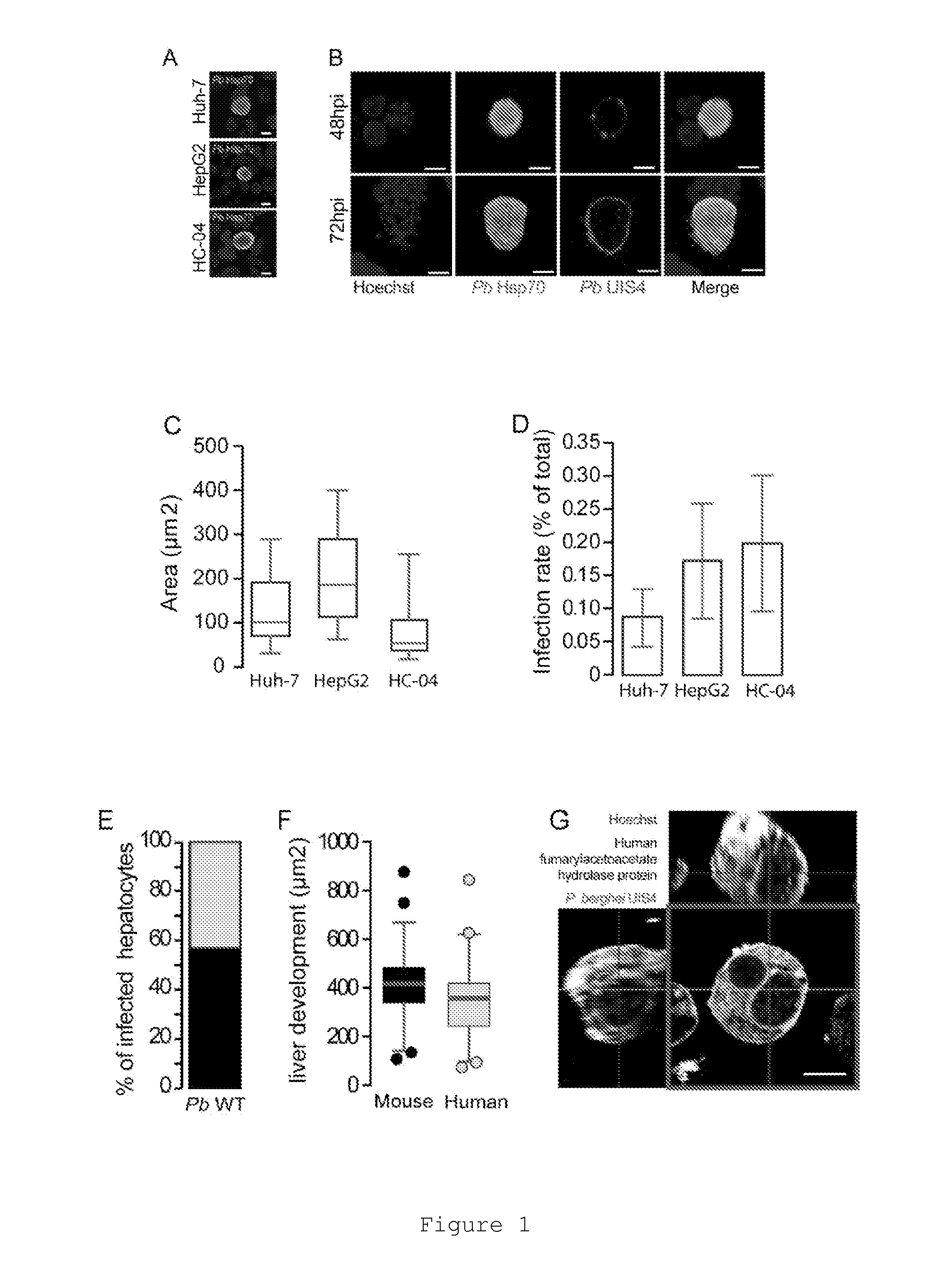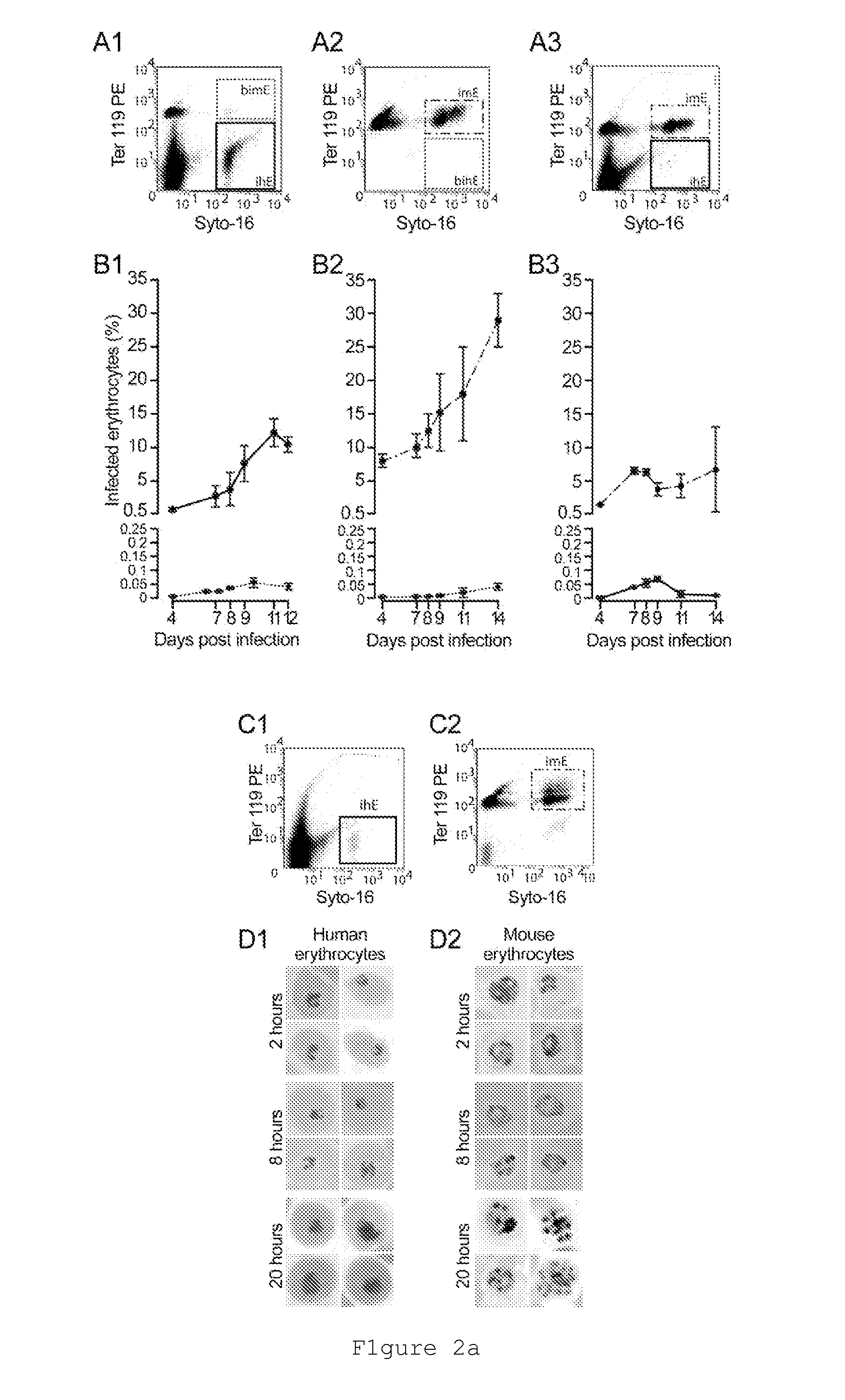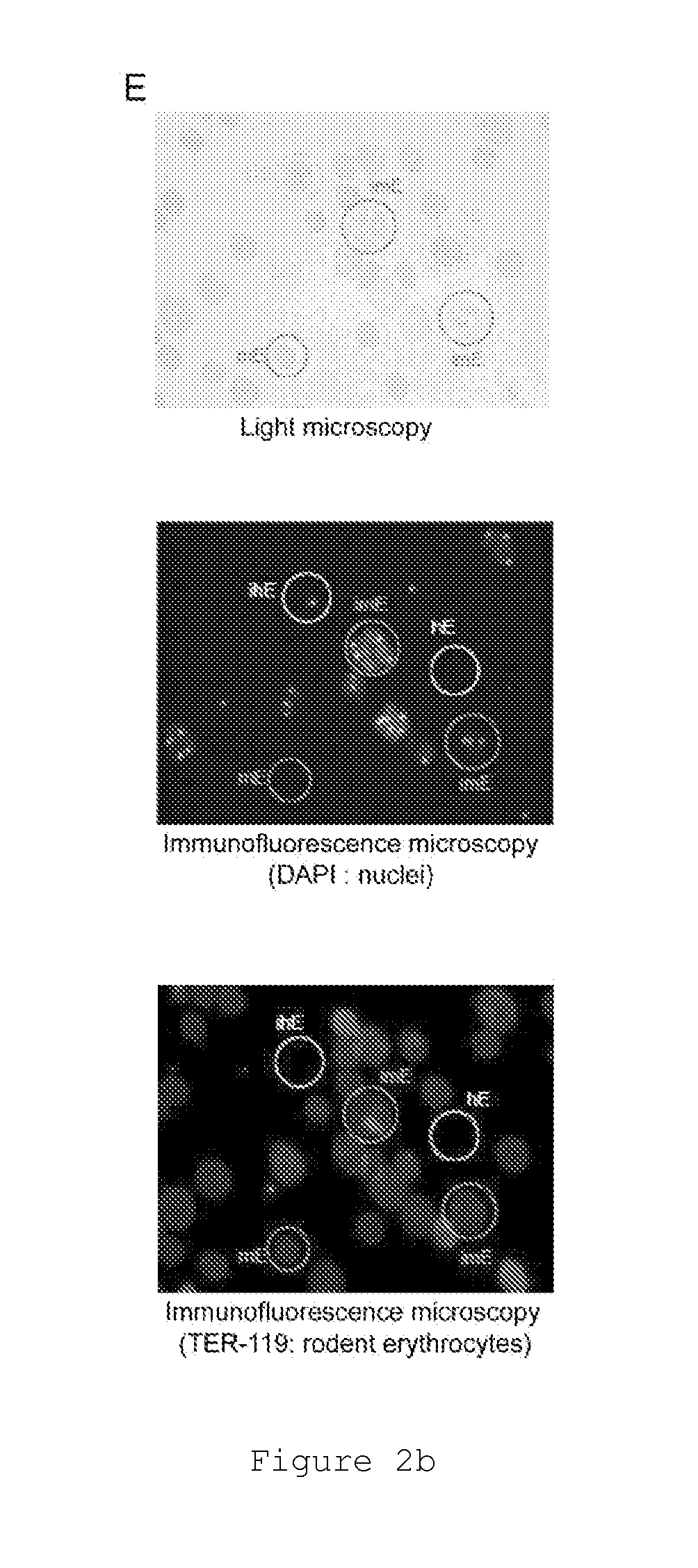Rodent plasmodium parasites as platforms for a whole-organism malaria vaccine
- Summary
- Abstract
- Description
- Claims
- Application Information
AI Technical Summary
Benefits of technology
Problems solved by technology
Method used
Image
Examples
Embodiment Construction
[0022]The present invention relates to an alternative approach to malaria vaccination that combines unprecedented versatility with high efficacy, whilst ensuring complete safety. We have demonstrated that (i) rodent malaria sporozoites (spz) can be used as a whole-organism pre-erythrocytic vaccine capable of generating a strong immune response because they are able to successfully infect and develop in human liver cells; (ii) rodent malaria parasites are an extremely safe antigen delivery platform because they are completely unable to complete their life cycle inside human erythrocytes, which renders then unable to cause a disease-triggering human blood-stage infection; (iii) rodent malaria parasites can induce a high level of cross-species protection against human Plasmodium species because they possess conserved molecules that can be recognized by the human immune system iv) Genetically engineered rodent Plasmodium parasites are highly immunogenic, being able to trigger specific i...
PUM
 Login to View More
Login to View More Abstract
Description
Claims
Application Information
 Login to View More
Login to View More - R&D
- Intellectual Property
- Life Sciences
- Materials
- Tech Scout
- Unparalleled Data Quality
- Higher Quality Content
- 60% Fewer Hallucinations
Browse by: Latest US Patents, China's latest patents, Technical Efficacy Thesaurus, Application Domain, Technology Topic, Popular Technical Reports.
© 2025 PatSnap. All rights reserved.Legal|Privacy policy|Modern Slavery Act Transparency Statement|Sitemap|About US| Contact US: help@patsnap.com



